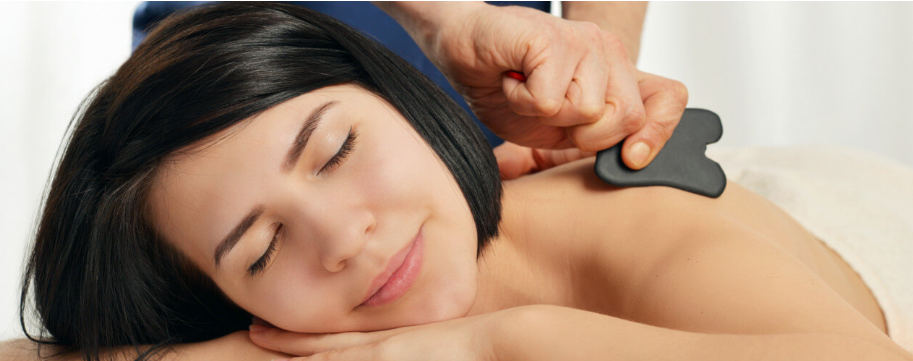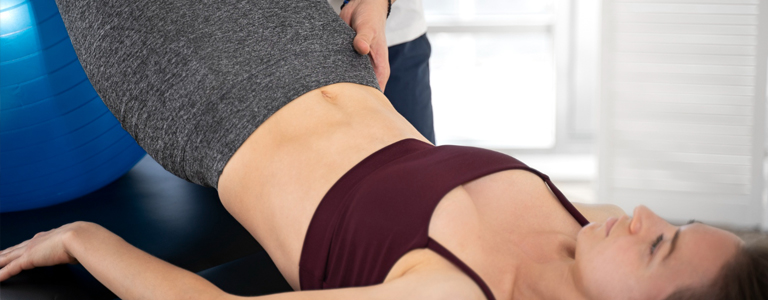If you’ve been experiencing back pain, it’s possible that it’s due to a herniated disk. A herniated disc can put extra pressure on the muscles and nerves surrounding the spinal column.
Pain on one side of the body, pain radiating to the arms or legs, pain in the affected region, burning sensations, and pain during certain movements are all possible symptoms.
If you think you’re suffering from a herniated disc, there’s some good news for you! Physical therapy can help you feel better by providing a variety of health benefits.
Causes of herniated discs
A group of bones from the spinal column. The cervical spine is made of seven bones, the lumbar spine has five, and the thoracic spine has twelve. Each disc has a gelatinous inner section and a strong outer ring. If the disc protrudes through the outer ring, it is known as a herniated disc. This can cause numbness, discomfort, and pain.
A herniated disc can be caused by a number of things, including turning or twisting. Moving heavy objects is another culprit. A herniated disc can also be caused by being overweight. This is due to the fact that the disks must bear more weight.
The discs start losing some of their protective water content as we age. It allows the disc to fall out of place more quickly. This means the elderly are at a higher risk of developing a herniated disc than someone who is in their 20’s or 30’s.
According to Healthline, men are also at a higher risk of developing a herniated disc than women.
Signs you may have a herniated disc
Herniated disc pain presents itself in a variety of ways depending on a person’s age, body type, and physical condition. Some common symptoms to look out for with herniated discs are as follows
- Leg or arm pain
- Pain worsens as you move or intensifies at night
- Pain worsens after standing or sitting
- Numbness and pain, usually on one side of the body
- Pain occurs after walking short distances
- Muscle weakness
- Aching, tingling, or burning sensations in the affected area
It is important to seek help if you’re experiencing any of all of the above-mentioned symptoms, as it could point to a herniated disc. The good news is that there are treatment options available to those suffering from this kind of pain, through physical therapy!
What happens if I ignore my back pain?
You might be wondering how long you can go without treatment for your back pain or herniated disc. It’s important to understand that a severe slipped disc can result in permanent nerve damage. This will only lead to more problems, which will almost certainly land you in a physical therapist’s office!
If your back pain is so debilitating that you can no longer do normal, everyday activities, this is a sign that your condition is worsening and you need to see a specialist.
Benefits of physical therapy for a herniated disc
Treatments for a slipped disc can vary. Some people may opt for surgery, however, treatment typically depends on the level of pain and discomfort a person is experiencing and how far the disc has slipped out of place.
When healing from a herniated disc, physical therapy plays a vital role. It’s a safer, healthier alternative than surgery as well. For pain relief and recovery, a physical therapist uses distinct strategies. A few examples of passive therapies involve passive treatments such as deep tissue massage, electrical stimulation, and hot and cold therapy.
Herniated discs cause spasms and deep muscle tension, which can be relieved with deep tissue massage. Hot therapy promotes healing by increasing blood flow to the affected area. Inflammation is reduced by using a cold treatment. Electric nerve stimulation reduces muscle spasms by sending a small electric current through the nerve pathway.
A physical therapist’s active treatments address joint mobility, stability, flexibility, strength, and posture. To strengthen the back muscles, a physical therapist will teach you to core stabilizing exercises.
To improve and condition the body, you’ll also participate in body muscle exercises. In addition, you will be taught flexibility exercises and proper strengthening techniques by a physical therapist.
If you have back pain, know that you can turn to physical therapy for help. A physical therapist will do a comprehensive exam and review your medical history to determine if you have a herniated disc. Once a proper diagnosis is made, a physical therapist will then create and implement a personalized treatment plan targeted to the affected area.
Call our clinic for an appointment today
The goal of physical therapy is to help you attain an active and pain-free life. It’s helped thousands of others and can help you, too. If you’re tired of letting your back pain dictate your daily life, put an end to your struggles today.
Get on the road to recovery from a herniated disc with physical therapy.
Source:
- https://www.healthline.com/health/herniated-disk#diagnosis
- https://www.healthline.com/health/muscle-weakness
Tags: health, wellness, physicaltherapy, achesandpains, PT, healthandwellness, healthytips, naturalpainrelief, physicaltherapist















